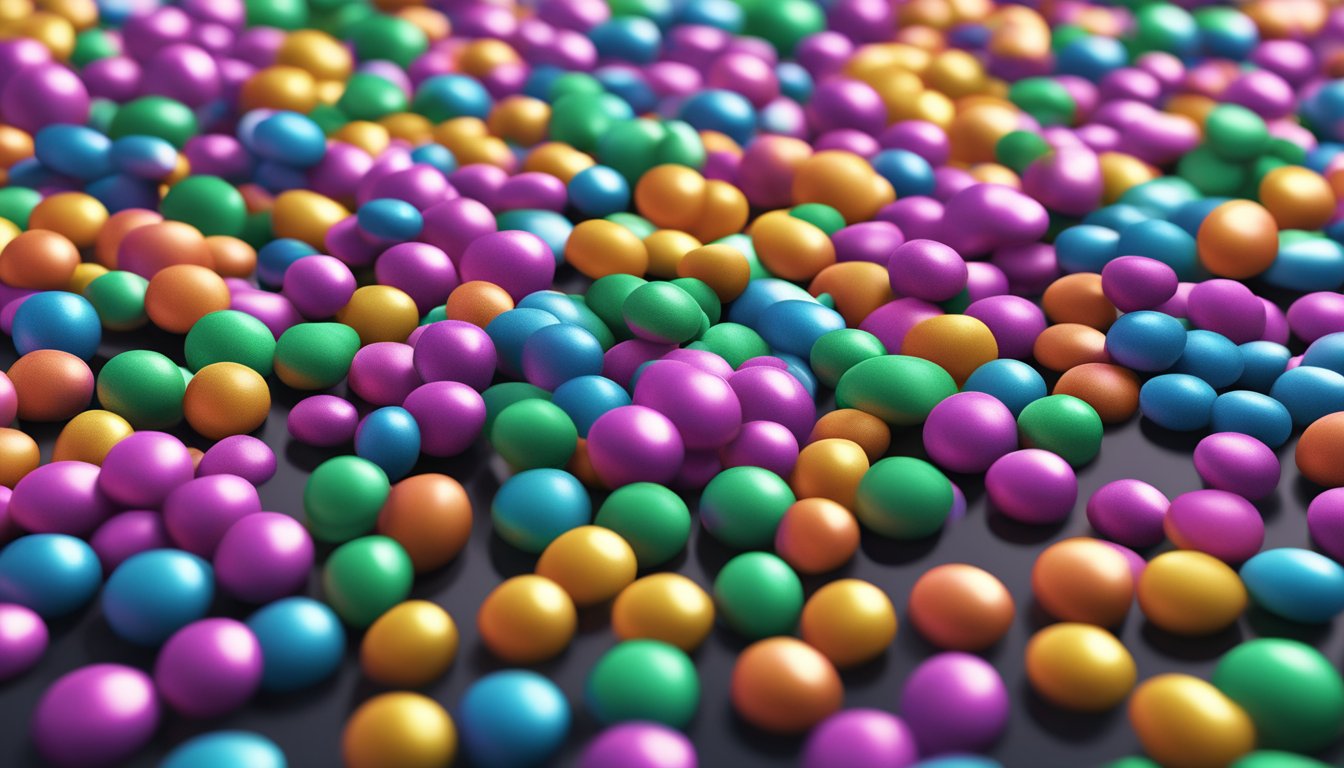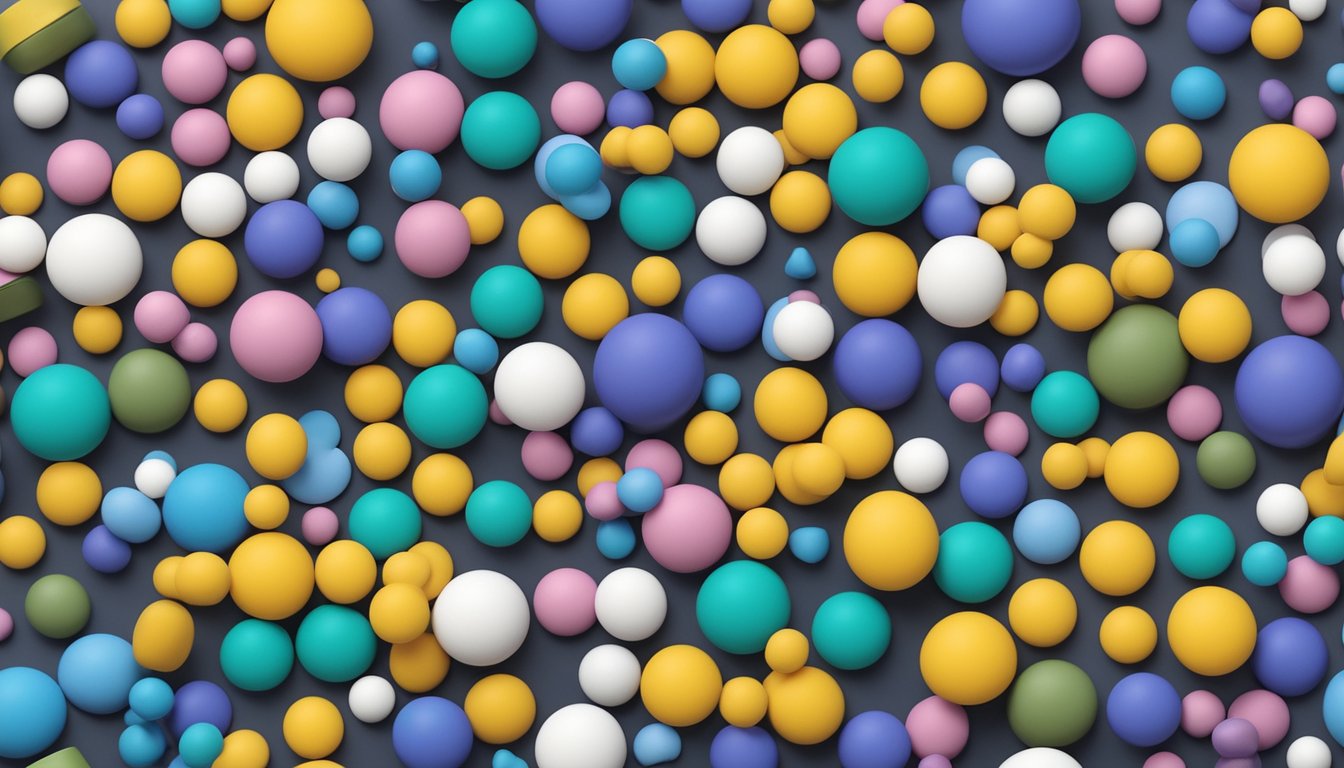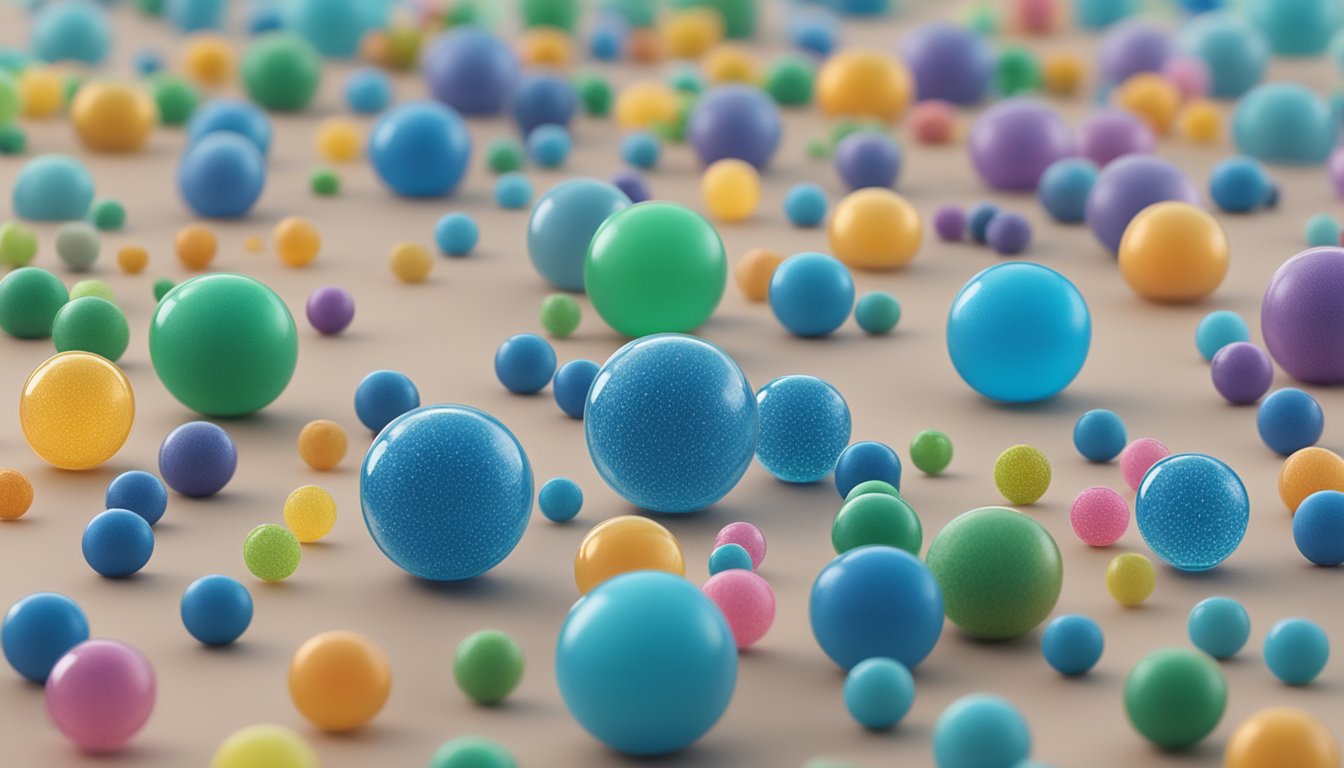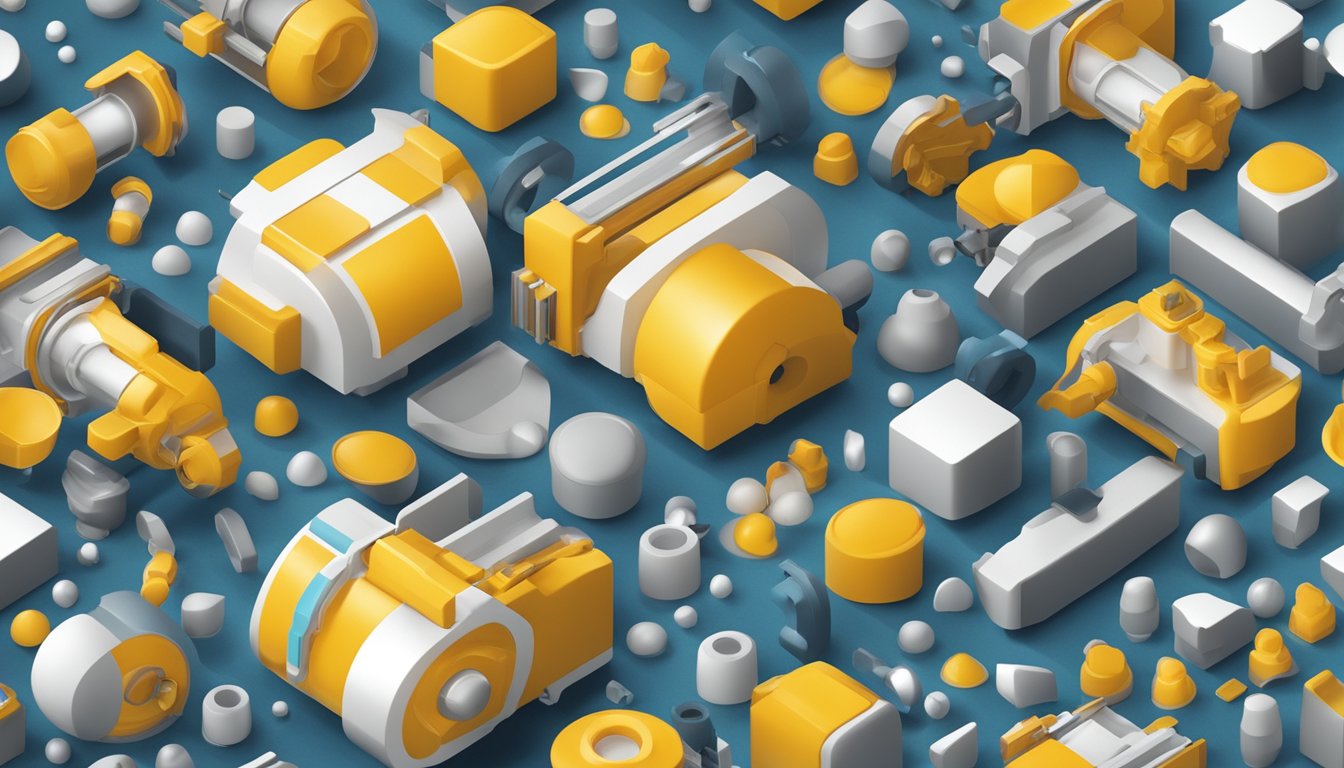PBAT Granules: An Overview of Biodegradable Plastic Alternatives
19/01/2024
Have you ever heard of PBAT granules? These biodegradable pellets have been gaining popularity in recent years as a sustainable alternative to traditional plastics. PBAT stands for polybutylene adipate terephthalate, a type of polyester that is made from renewable resources such as corn starch, sugarcane, and potato starch.

PBAT granules have several advantages over traditional plastics. Firstly, they are fully biodegradable, meaning they can break down into natural compounds in the environment. This makes them a more environmentally friendly option for packaging and other applications. Additionally, PBAT granules have similar properties to traditional plastics, making them a viable alternative without sacrificing functionality. They are also resistant to high temperatures and have good mechanical strength, making them suitable for a wide range of applications.
Chemical Composition of PBAT Granules

PBAT granules are composed of several different materials that work together to create a biodegradable and compostable product. The main components of PBAT granules are:
- Polybutylene adipate terephthalate (PBAT): This is the primary component of PBAT granules, making up around 60-70% of the material. PBAT is a biodegradable polyester that is made from adipic acid, terephthalic acid, and butanediol. It is known for its flexibility, toughness, and durability.
- Starch: Starch is used as a filler material in PBAT granules, making up around 20-30% of the material. It is a renewable resource that helps to reduce the amount of PBAT needed to create the granules.
- Plasticizers: PBAT granules also contain plasticizers, which are added to improve the flexibility and workability of the material. These plasticizers are typically made from vegetable oils or other renewable resources.
- Additives: Finally, PBAT granules may contain various additives, such as pigments or UV stabilizers, to improve the appearance and performance of the material.
Overall, the chemical composition of PBAT granules makes them an attractive option for environmentally conscious consumers and businesses. They are made from renewable resources, biodegradable, and compostable, making them a sustainable alternative to traditional plastics.
Properties of PBAT Granules

Physical Properties
PBAT (Polybutylene adipate-co-terephthalate) granules are a type of biodegradable plastic that are commonly used in packaging and disposable products. These granules are typically white or off-white in color and have a spherical shape. PBAT granules have a density of around 1.25 g/cm³ and a melting point of approximately 100-120°C.
PBAT granules are known for their flexibility and durability. They have a high tensile strength and elongation at break, making them suitable for a range of applications. Additionally, PBAT granules have good barrier properties, which means they can help to protect products from moisture and other environmental factors.
Biodegradability
One of the key properties of PBAT granules is their biodegradability. PBAT is a biodegradable polyester that can decompose under certain conditions. When exposed to heat, moisture, and microorganisms, PBAT granules can break down into carbon dioxide, water, and biomass. This process can help to reduce the environmental impact of plastic waste.
It is important to note that the biodegradability of PBAT granules can vary depending on the conditions they are exposed to. In general, PBAT is more likely to biodegrade in industrial composting facilities, where conditions are optimized for biodegradation. However, PBAT may not biodegrade as quickly in other environments, such as landfills or marine environments.
Thermal Stability
PBAT granules have good thermal stability, which means they can withstand high temperatures without melting or degrading. This property makes PBAT granules suitable for use in applications where heat resistance is important, such as hot-fill packaging or food service products.
However, it is important to note that PBAT granules can degrade when exposed to prolonged heat or high temperatures. This can affect the physical properties of the material and reduce its overall performance. Therefore, it is important to use PBAT granules within their recommended temperature range to ensure optimal performance and longevity.
Production Process of PBAT Granules

Polymerization Methods
PBAT granules are produced through a polymerization process. There are two main methods of polymerization used in the production of PBAT granules – solution polymerization and melt polymerization.
In solution polymerization, the raw materials are dissolved in a solvent and then polymerized. The resulting polymer solution is then dried to obtain PBAT granules. This method is commonly used for the production of high molecular weight PBAT granules.
In melt polymerization, the raw materials are melted and then polymerized. The resulting polymer melt is then cooled and solidified to obtain PBAT granules. This method is commonly used for the production of low to medium molecular weight PBAT granules.
Raw Materials Used
The raw materials used in the production of PBAT granules include biodegradable polymers such as polylactic acid (PLA), polyhydroxyalkanoates (PHA), and starch-based polymers. These polymers are blended with butanediol (BD) and adipic acid (AA) to form PBAT.
The ratio of the raw materials used in the production of PBAT granules can vary depending on the desired properties of the final product. For example, increasing the ratio of PLA in the blend can result in PBAT granules with improved mechanical properties.
In addition to the raw materials, various additives such as plasticizers, stabilizers, and pigments may also be added to the PBAT granules to enhance their properties.
Overall, the production process of PBAT granules involves the polymerization of biodegradable polymers and butanediol and adipic acid to form a biodegradable polymer blend. The resulting PBAT granules can have varying properties depending on the ratio of the raw materials used and any additives included in the blend.
Applications of PBAT Granules
PBAT granules are a versatile material that can be used in a variety of industries. Here are a few examples of how PBAT granules are used:
Packaging Industry
PBAT granules are commonly used in the packaging industry due to their biodegradability and compostability. They can be used to make a wide range of packaging products, including bags, films, and containers. PBAT granules have excellent mechanical properties, making them ideal for use in packaging products that need to withstand stress and pressure.
Agricultural Sector
PBAT granules are also used in the agricultural sector. They can be used to make mulch films, which help to control weed growth and retain moisture in the soil. PBAT mulch films are biodegradable and can be left in the field after use, eliminating the need for costly and time-consuming removal.
Compostable Products
PBAT granules are increasingly being used to make compostable products, such as cutlery, cups, and plates. These products are biodegradable and can be composted along with food waste, reducing the amount of waste that ends up in landfills. PBAT granules are an excellent alternative to traditional plastic products, which can take hundreds of years to decompose.
In summary, PBAT granule are a versatile material that can be used in a variety of industries. They are biodegradable, compostable, and have excellent mechanical properties, making them an ideal choice for packaging, agriculture, and compostable products.
Market Trends for PBAT Granule
If you’re in the market for PBAT granule, you’ll be pleased to know that the demand for this biodegradable plastic is on the rise. PBAT granule have become increasingly popular in recent years due to their eco-friendly properties, and this trend is expected to continue.
One of the main factors driving the growth of the PBAT granule market is the increasing consumer awareness of environmental issues and the need for sustainable products. As more people become aware of the impact of non-biodegradable plastics on the environment, they are looking for alternatives that are more eco-friendly.
Another factor contributing to the growth of the PBAT granule market is the increasing number of regulations and policies aimed at reducing plastic waste. Many countries and regions have implemented bans or restrictions on single-use plastics, which has created a demand for biodegradable alternatives such as PBAT granule.
In addition, the development of new technologies and manufacturing processes has made it easier and more cost-effective to produce PBAT granule. This has led to an increase in production capacity and a reduction in costs, making PBAT granule more accessible to a wider range of businesses and industries.
Overall, the market trends for PBAT granule are positive, with increasing demand and expanding production capacity. If you’re looking for an eco-friendly alternative to traditional plastics, PBAT granule may be the solution you’re looking for.
Environmental Impact of PBAT Granules
When it comes to environmental impact, PBAT granule offer some advantages over traditional plastics. PBAT is fully biodegradable and compostable, meaning it can break down into natural materials over time. This makes it a more environmentally friendly option compared to plastics that can take hundreds of years to decompose.
PBAT granule are also made from renewable resources, such as cornstarch, making them a more sustainable alternative to petroleum-based plastics. Additionally, PBAT production emits fewer greenhouse gases compared to traditional plastics, further reducing its impact on the environment.
However, it’s important to note that PBAT is not a perfect solution. While it may break down into natural materials, it still requires specific conditions to do so, such as high temperatures and moisture. If PBAT is not disposed of properly, it can still contribute to pollution and harm the environment.
Overall, PBAT granule offer a more eco-friendly option for plastic products. As more companies and consumers become aware of the environmental impact of traditional plastics, the demand for sustainable alternatives like PBAT will likely continue to grow.
Regulatory Framework for PBAT Granule
If you are planning to manufacture or use PBAT granule, it is important to understand the regulatory framework that governs their production and use. PBAT is considered a biodegradable polymer, and as such, it is subject to specific regulations.
The regulatory framework for PBAT granule varies depending on the country or region where they are produced and used. In the United States, for example, the Environmental Protection Agency (EPA) regulates the production and use of biodegradable polymers under the Toxic Substances Control Act (TSCA).
In Europe, the European Chemicals Agency (ECHA) is responsible for regulating the use of biodegradable polymers, including PBAT. PBAT is listed under the European Inventory of Existing Commercial Chemical Substances (EINECS) and is subject to the Registration, Evaluation, Authorization and Restriction of Chemicals (REACH) regulation.
In addition to these regulations, some countries have specific requirements for biodegradable polymers used in certain applications. For example, in Japan, biodegradable polymers used in food packaging must meet specific standards set by the Japanese Ministry of Health, Labour and Welfare.
It is important to note that while PBAT is considered a biodegradable polymer, it may not be suitable for all applications. PBAT may not biodegrade under certain conditions, such as in landfills, where the lack of oxygen and moisture can prevent biodegradation. It is important to consider the specific application and environmental conditions when choosing a biodegradable polymer.
Overall, understanding the regulatory framework for PBAT granule is essential for ensuring compliance with relevant regulations and for making informed decisions about their production and use.
Frequently Asked Questions
What are the typical applications of PBAT in various industries?
PBAT is a versatile biodegradable polymer that finds applications in various industries. It is commonly used in food packaging, compost bags, agricultural films, and hygiene products. PBAT’s excellent biodegradability and compatibility with other biodegradable polymers make it a popular choice in the production of bioplastics.
How does the cost of PBAT granule compare to other biodegradable polymers?
PBAT is competitively priced compared to other biodegradable polymers such as PLA and PHA. The cost of PBAT granule varies based on factors such as the quantity ordered, the quality of the product, and the supplier’s location. However, PBAT’s excellent mechanical properties, biodegradability, and compatibility with other biodegradable polymers make it a cost-effective option.
What are the main benefits of using PBAT in food packaging?
PBAT is an excellent choice for food packaging due to its biodegradability, low toxicity, and excellent mechanical properties. PBAT’s biodegradability ensures that food packaging waste does not harm the environment. Additionally, PBAT’s compatibility with other biodegradable polymers makes it an excellent choice for producing multilayered food packaging.
Can you explain the biodegradation process of PBAT and its environmental impact?
PBAT biodegrades through microbial action in soil, compost, and marine environments. The biodegradation process of PBAT results in the formation of carbon dioxide, water, and biomass, which are non-toxic and do not harm the environment. PBAT’s excellent biodegradability ensures that it does not contribute to plastic pollution.
What factors should be considered when purchasing PBAT granules in bulk?
When purchasing PBAT granule in bulk, it is essential to consider factors such as the quality of the product, the supplier’s location, and the quantity ordered. Additionally, it is essential to ensure that the PBAT granule are compatible with other biodegradable polymers if they are to be used in multilayered products.
How does PBAT performance differ from PLA in bioplastic products?
PBAT and PLA are both biodegradable polymers used in bioplastic products. However, PBAT has better mechanical properties, making it an excellent choice for producing durable products. Additionally, PBAT’s compatibility with other biodegradable polymers makes it an excellent choice for producing multilayered products.




